Keynote Speaker 1
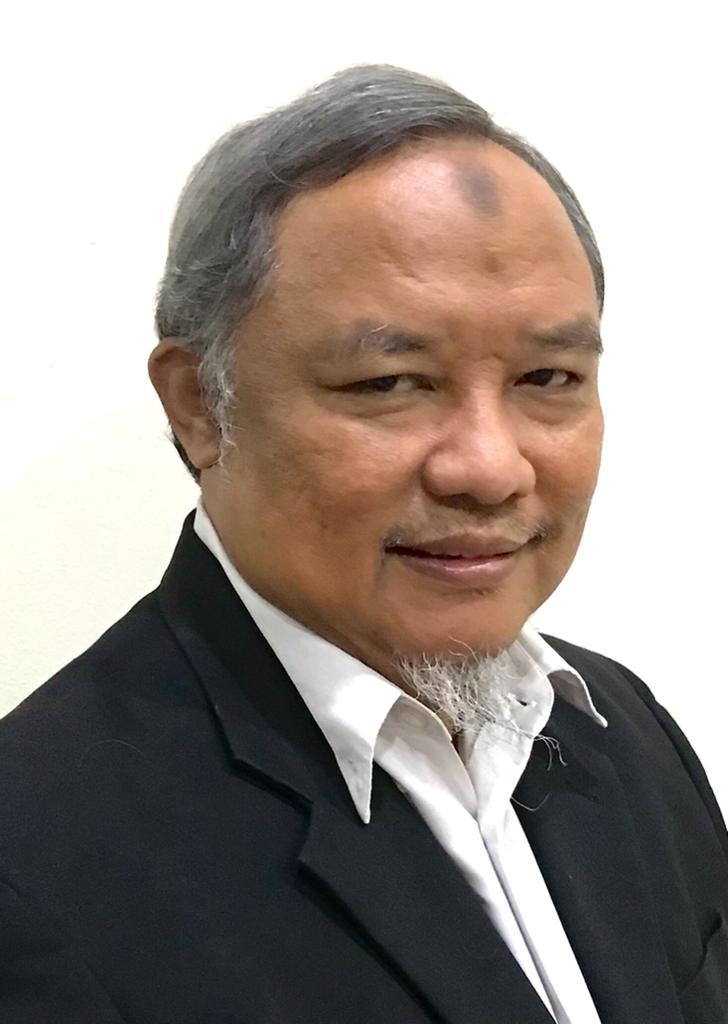
Professor Ir Dr Mohd Sapuan Salit
Professor of Composite Materials, Department of Mechanical and Manufacturing Engineering, Universiti Putra Malaysia
Head Laboratory of Biocomposite Technology, Institute of Tropical Forestry and Forest Products (INTROP), Universiti Putra Malaysia, 43400 UPM Serdang, Selangor, Malaysia
sapuan@upm.edu.my
ENGINEERING BIOCOMPOSITES: TRANSFORMING TOWARDS CIRCULAR ECONOMY
Biocomposites or natural fibre composites are emerging materials used in different industries such as automotive, aerospace, furniture, building construction, packaging and defence. Many different fibres have been reported to be used as reinforcement fibres or fillers in biopolymer or synthetic polymer matrices to form biocomposites. In Malaysia, kenaf, oil palm, banana pseudo-stem, coconut shell and coir, roselle, sugar palm, rice husk, among others, have been used as reinforcements and fillers in composites. In this lecture, different topics related to biocomposites such as characterization, product development, fabrication, and applications are presented. Various issues in the fabrication and mass production of products from biocomposites are discussed. The importance of commercialization is emphasized in transforming these materials towards circular economy.
Keynote Speaker 2
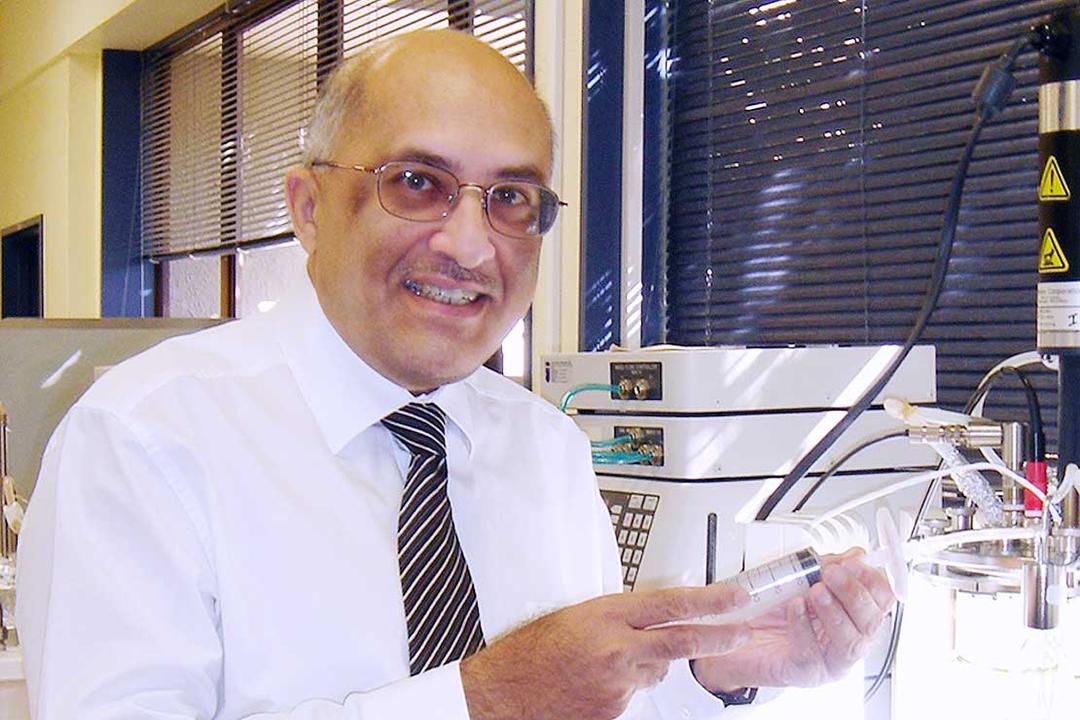
Professor Yusuf Chisti
School of Engineering, Massey University, Private Bag 11 222, Palmerston North, New Zealand
MICROALGAE FOR SUSTAINABLE PRODUCTION: EMERGING TRENDS AND INNOVATIONS
Microalgae and cyanobacteria are sunlight-driven cell factories with well-established applications as aquaculture feeds, niche foods, nutraceuticals and sources of some high-value products. Commercial use of microalgae and cyanobacteria remains miniscule compared with their natural contribution to provision of all wild-caught seafood, carbon capture in the oceans and nitrogen fixation in rice fields. Despite much effort, attempts to commercialize biofuels from microalgae have failed mainly on account of economics and questionable sustainability. Notwithstanding the setbacks, the promise of microalgae remains. Essential new knowledge and enabling tools have emerged to sustain commercialization. For example, complete genomes have been sequenced for nearly 60 algal species (including macroalgae) enabling genome-based metabolic models to be developed to allow rapid in silico assessment of the effects of external stimuli (e.g. nutrients, light level) on productivity. Such models can be used to also inform possible genetic engineering amid at enhancing performance. A molecular level understanding of the cell factory per se needs to be combined with a similarly sophisticated understanding of the mass culture system, whether an open pond or a closed photobioreactor. Uniform levels of light, a high rate of supply of carbon dioxide and rapid removal of potentially toxic oxygen from a culture, are feasible in the laboratory, but may be impossible to achieve in a large-scale production system. Application of computational fluid dynamics to design of biomass production systems may allow raising the commercial system productivity level to limits imposed by the fundamental biochemistry of the cell factory. Microalgae-based processes may yet play a role in mitigating climate change. These and other emerging trends in micoroalgae biotechnology will be discussed.
Invited Speaker 1
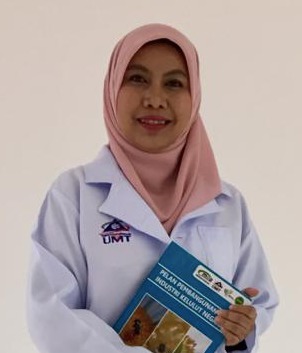
Associate Professor Dr. Wan Iryani Wan Ismail
Cell Signalling and Biotechnology Research Group (CeSBTech) and Biological Security and Sustainability Research Group (BIOSES), Faculty of Science and Marine Environment, Universiti Malaysia Terengganu, 21030 Kuala Nerus, Terengganu, Malaysia
HOLISTIC INNOVATION IN STINGLESS BEEKEEPING TOWARDS COMMODITY 2.0 IN MALAYSIA
Stingless beekeeping or also known as Meliponiculture has been developed as a new beekeeping activity in Malaysia. Since 2014-2016, various research and social activities related to stingless bees have been established to fulfill stingless bee honey market demand. Interestingly, the activities were initially driven by the beekeepers (bottom-up approach) which later create momentum to the government to take appropriate actions. In 2017, approximately RM20 million sales from stingless bee honey were reported by the Department of Agriculture Malaysia. The value is predicted to increase from year to year and give a bright future to the honey industry. However, more attention is required by the authorities to make sure the journey and development of the stingless beekeeping and honey industry are sustained and can be enhanced as one of our new Commodity 2.0 in the future. A holistic innovation with green technology approach will give a great benefit to stingless beekeeping. Simultaneously, it can contribute as one of the entrepreneurial social development activities by increasing the income generation among the beekeepers. In addition, it can provide honey and other bee products, which are high in nutritional value for maintaining a healthy body of beekeepers and consumers. Indirectly, stingless beekeeping can give benefits to our food security issue as a natural pollinator agent in the agricultural sector through green agriculture practice, which can balance the ecosystem for the long period.
Invited Speaker 2
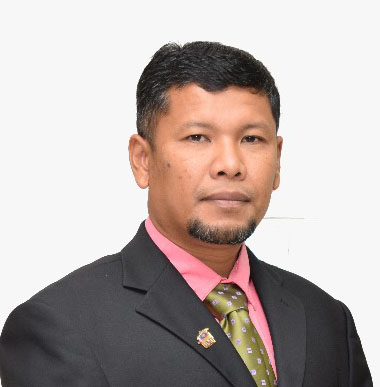
Associate Professor. Dr. Hasrizal bin Shaari
Paleoceanography Research Group (PoRIG), Faculty of Science and Marine Environment, Universiti Malaysia Terengganu, 21030, Kuala Terengganu, Malaysia
riz@umt.edu.my
GEOCHEMICAL RECORD OF THE HOLOCENE EPOCH IN THE COASTAL AREA OF MALACCA STRAIT
An understanding of the environmental changes in Malacca Strait is significant due to the importance of this strait as the maritime strategic pathway. In this study, we investigated the minerals content (smectite, illite, gypsum, chlorite + kaolinite, quartz, feldspars, calcite and salt), organic carbon and mean sediment grain size from two short cores collected at the coastal area off Perak (core 10095P) and Penang (20050P) to understand the environmental condition in the early Holocene. Radiocarbon analysis of peat deposits estimated that the age of sediment cores were covered the early Holocene period (9,524 - 11,346 cal yrs BP). Peat-dominated deposits with high concentration of organic carbon in core 10095P (1.71 – 11.31%) and 20050p (3.74 – 14.76%) may suggest that the coastal area off Perak and Penang started to change from terrestrial to the wetland environment during the early Holocene. Higher content of salt, gypsum and calcite in the peat-dominated sediment than non-peat dominated sediment deposits represented the high tendency of peat to trap the marine originated minerals when the areas were inundated by seawater. While, The accumulation of high quartz and feldspars in the sediment layer on top of the peat layer in core 010095P imply that the coastal areas off Perak received high terrestrial sediment input after 9524 cal yrs BP. However, the accumulation of sediment in core 020050P was significantly different than core 010095P whereby peat-dominated sediment was discovered at the core top section (5 and 75 cm core depth) instead of the bottom section. Therefore, based on the geochemical data we interpreted that the coastal areas off Perak are relatively more dynamic in term of sedimentation process and coastal current action than Penang waters after the early Holocene.
Invited Speaker 3
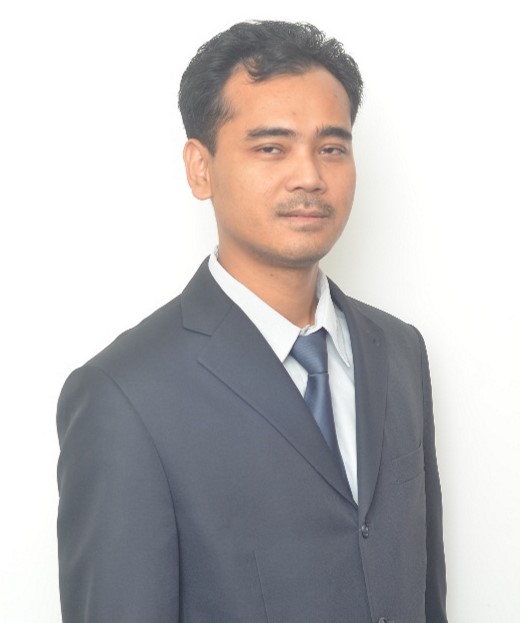
Associate Professor Muhamad Azizi Mat Yajid
School of Mechanical Engineering, Faculty of Engineering, Universiti Teknologi Malaysia, 81310 Johor, Malaysia
azizi@utm.my
ADVANCEMENT OF SILICA AEROGELS FOR ENGINEERING APPLICATIONS
Recently, the advancement of silica aerogel aerogel for various engineering applications has put great interest of many researchers. This materials is first synthesized in 1930’s. However, in the field of material sciences, this material is one that is currently gathering momentum and one that is still actively being researched with incremental innovation around it happening progressively. Silica aerogel is derived from silica gel in which the liquid component of the gel has been replaced with a gas. The result is an extremely low density porous solid with several remarkable properties, most notably its effectiveness as a thermal insulator. Conventional silica aerogels available in the market are derived from chemicals (e.g. silicone alkoxides). These raw materials, although it offers high quality silica aerogels, are eventually less sustainable, costly and unfriendly to environment. The high cost of current commercial silica aerogels is prohibitive to cost sensitive industries such as housing. One of the current alternative precursor of silica aerogel is from rice husk which abundant agro-waste in Malaysia. This research will highlight the potential applications of silica aerogel which covers the applied composite-aerogel as a function of lightweight, thermal insulation to corrosion protection materials. Three (3) research areas were explored; first is the optimization of the silica aerogel synthesis toward commercialization, with the aims of reducing the overall cost while obtaining optimum properties. Second is the application of silica aerogel particles (i.e. granules) as a porous filler in polymer matrix composites for thermal insulation application. The last but not least is the development of lightweight silica aerogel composite panel which can be used in construction. With its exceptional abilities to insulate most occupied space while offers fire protection, the impact on sustainable construction technologies is very significant. The latest research will also explore the potential silica aerogel for corrosion protection, known as corrosion under insulation.
Invited Speaker 4
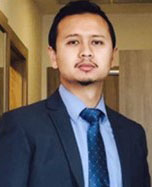
Associate Professor Dr. Mohd Shahrul Bin Mohd Nadzir
Department of Earth Sciences and Environment, Faculty of Science & Technology, Universiti Kebangsaan Malaysia
shahrulnadzir@ukm.edu.my
THE RISE OF AiRBOXSense: MAKING SENSE OF LOW-COST SENSOR TECHNOLOGY FOR AIR POLLUTION MONITORING
In general, approaches for monitoring air pollution generally use expensive, complex, stationary equipment, and how data are accessed. This paradigm is changing with the materialization of lower-cost, easy-to-use, portable air pollution monitors (sensors) that provide high-time resolution data in near real-time. In our latest innovation, we present AiRBOXSense, a custom-made Low-cost Air Quality Data (LAQS) that monitors the gas pollutants ozone (O3), nitrogen dioxide (NO2), and carbon monoxide (CO) and particulate matters. he aim of this study is to investigate its performance based on laboratory calibration and field experiments. Several model calibrations were developed to improve the accuracy and performance of the LAQS. Laboratory calibrations were carried out to determine the zero offset and sensitivities of each sensor. The results showed that the sensor performed with a highly linear correlation with the reference instrument with a response-time range from 0.5 to 1.7 min. The performance of several calibration models including a calibrated simple equation and supervised learning algorithms (adaptive neuro-fuzzy inference system or ANFIS and the multilayer feed-forward perceptron or MLP) were compared. Combinations of inputs were evaluated during the development of the supervised learning algorithm. The validation results demonstrated that the ANFIS model with four inputs (WE OX, AE OX, T, and NO2) had the lowest error in terms of statistical performance and the highest correlation coefficients with respect to the reference instrument (0.8 < r < 0.95). These results suggest that the ANFIS model is promising as a calibration tool since it has the capability to improve the accuracy and performance of the AiRBOXSense.
Invited Speaker 5
Professor Dr. Ali Temiz

Karadeniz Technical University, Faculty of Forestry, Department of Forest Products Engineering, 61080, Trabzon, Turkey
temiz@ktu.edu.tr
GREEN TECHNOLOGIES ON WOOD PROTECTION
Wood and engineered wood products including glued laminated timber, finger joints, plywood, mechanically and adhesive bonded beams etc. have been widely used for structural and non-structural applications due to their excellent properties such as renewable, green material, high strength in relation to weight, simplicity of construction, easy machinability and climate-smart than those of fossil-based materials and processes such as steel and concrete. However, wood is biodegradable and requires carefully consideration when it is exposed to favorable conditions for decay. Wood durability can be improved through wood preservatives or modification methods. Cu+2 is still primary chemical compound used in most of wood preservatives including Alkaline Copper Quat (ACQ), Micronized Copper Quat (MCQ), Tanalith E and Copper Chrome Boron (CCB) due to generation of highly active free radicals destroying fungal proteins and DNA. During recent years, due to potential negative effect of copper on human health and environment, Scientists have studied on environmental friendly wood preservatives derived from vegetables, fruits, and wood barks. Different oils such as linseed, palm, tung seed, soybean oils have been used as potential wood protection systems. However, bleeding and large amount of oils needed for adequate protection are main drawback of oil treatments. One of the effective way to immobilize the oil in wood is polymerization of the oils. Plant oils containing unsaturated fatty acid can be chemically modified by epoxidation process via peracetic acid, dioxirane or hydrogen peroxide as a catalyst. In this paper, it was evaluated modified oils for wood modification as green substance.
Invited Speaker 6
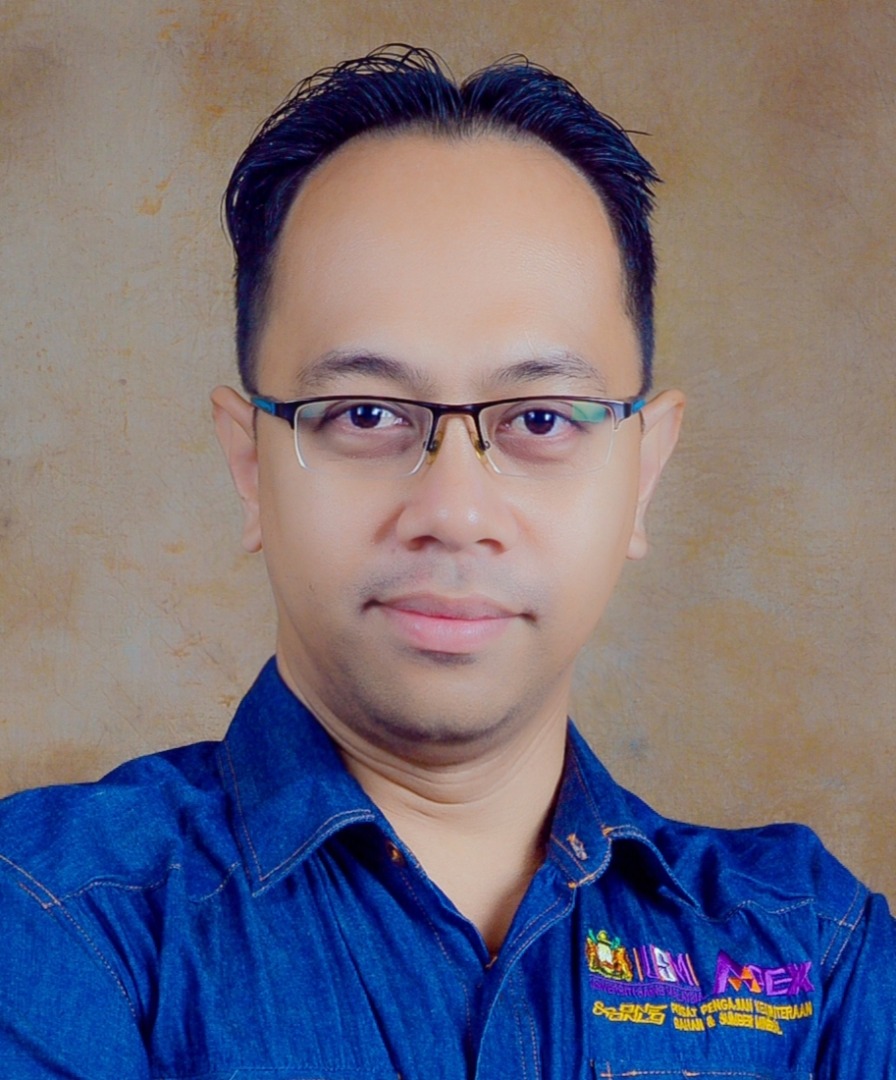
Associate Professor Ir. Ts. Dr. Mohd Hazizan bin Mohd Hashim
Strategic Mineral Niche, School of Materials and Mineral Resources Engineering, Universiti Sains Malaysia, Engineering Campus,14300 Nibong Tebal, Penang, Malaysia
mohd_hazizan@usm.my
SUSTAINABLE DEVELOPMENT IN MINING: CHALLENGES AND FUTURE DIRECTIONS
This article reviews the challenges of sustainable development practices in mining. The mining industry contributes significantly to the economic growth of any nation but associated with social and environmental challenges. These environmental and social problems frequently generate conflicts between mining companies, governments, and local communities. The conflicts can be tremendously minimized if sustainable development practices are adopted in the value chain of mining throughout the entire life of a mine. Mining provides fiscal revenues to a country, propel economic growth, create jobs, and produces the materials needed for infrastructural development but destroys the natural landscape and biodiversity. Hence, mining has both positive and negative consequences for the Sustainable Development Goals (SDGs) and direct impact on over 60% of these goals. Future trend of sustainability in mining must involve multi-national collaborations to explore under water minerals and outer space. Development of specific indicators to evaluate sustainability in each stage of the life cycle of a mine is a necessary challenge. It is imperative to prove continuous improvements in sustainability performance. Suitable indicators must also be developed to assess sustainability of the energy minerals owing to their uniqueness.
Invited Speaker 7

Professor Dr. Ir. Ellin Harlia
Faculty of Animal Husbandry, Universitas Padjadjaran, Jl. Raya Bandung-Sumedang Km 21, Jatinangor, Sumedang, Indonesia
ellin.harlia@unpad.ac.id
TOWARDS AN ENVIRONMENTALLY FRIENDLY SMALLHOLDER FARMERS
The livestock industry and smallholder farmers generally concentrate on production and population, not focusing on the importance of waste management. The government has issued a regulation concerning the Preservation of the Animal Husbandry Environment. However, these regulations have not been understood and implemented by the smallholder farmers and the livestock industry in the field. Livestock waste is often a problem for the environment, namely greenhouse gases, pollution of water sources, increased BOD and COD, decreased DO, odors that disturb the comfort, and sources of microorganisms that can harm health. The problem of pollution that often occurs is the disposal of liquid waste into rivers and community water sources. The management of waste from smallholder farmers has been arranged to be managed collectively in groups. Complaints from the public to environmental agencies have resulted in the livestock industry being sanctioned to stop waste management activities. Both solid and liquid waste management activities cannot be stopped because they are generated daily. Sanctions for environmental violations are not to punish a person but seek solutions to preserve the environment. Efforts to create environmentally friendly and sustainable smallholder farmers have been pursued through counseling, training, and waste management demonstration plots to provide education and examples to farmers to not dispose of solid or liquid waste before proper management is carried out. Processing that can be done for solid waste not to form methane is making compost aerobically with the method open windrow and vermicomosting. Processing solid waste into a solid organic soil conditioner and a solid biological soil conditioner. As for liquid waste, it can be processed into liquid organic fertilizer, liquid organic soil conditioner, and liquid biological soil conditioner. Livestock feces and rumen are a source of microorganisms (bacteria, fungi, yeast, Archeae), which can be used as a starter for processing into biological fertilizers and biological soil conditioners. Products produced from waste processing help maintain soil quality and provide nutrients for plants. After becoming products, farmers can use these products on privately owned or groupowned farms following regulations
SPONSOR’S TALK
Dr. Andrew Menzies
Senior Application Scientist, Bruker Nano Analytics GmBH, Berlin, Germany
Andrew.Menzies@bruker.com
ADVANCING LIFE SCIENCE SEM-EDS ANALYSIS WITH THE XFLASH FLATQUAD
Elemental analysis using SEM-EDS is often challenging when it comes to life science samples. This is particularly difficult when standard sample preparation methods, like carbon-coating or polishing, are not possible. This is because topographically complex samples often lead to data shadow effects when the samples are not polished and charging for uncoated samples. In addition, low beam currents often have to be applied so that the sample is not damaged, and this subsequently leads to low count rates and potentially long analytical times.
To overcome such analytical challenges, the XFlash® FlatQUAD (Figure 1) has been developed. This detector is inserted between the pole-piece and the sample and is ideally suited for the analysis of the aforementioned topographically complex and beam sensitive samples. Furthermore, high-speed mapping is possible due to the ultra-high-count rates that are acquired. Shadowing effects are minimized as there are four separate X-ray detector segments that cover a large solid angle of 1.1sr. This allows sufficient data to be collected at low beam currents, such as the pA range, where a sample can be investigated without carbon coating under high vacuum. Compared to low vacuum analysis, this results in higher spatial resolution of the SEM images and X-ray element mappings. In addition, when using normal beam currents, a complete thin section (40 x 25 mm) can be mapped in few minutes of acquisition time.
Different life science examples were analysed at low beam currents to avoid charging and beam damage on the sample, as well as enable ultra-high-speed data acquisition. Here we will present examples from this life science study, samples from a sea urchin, a bacterium, a microbial mat of diatoms, a wasp and geological thin sections were investigated with this unique SDD detector.
The EDS map (Figure 2) shows a sea urchin (Paracentrotus lividus) collected in the Aegean Sea near Athens, Greece. The bumps visible on the two top images are the sockets where the urchins’ long spines are attached. They are being held in place by muscles and collagen so that they can be moved if the urchin wants to hide in a crevasse and they can be held rigid in a defensive mode, e.g. when stepped on. The two bottom images showing individual salt (green) and sand (red) grains. The skeleton of the sea urchin is produced by biomineralization, consisting of high-magnesium calcite. The architecture of the skeleton reveals a sponge-like lightweight structure, which can bare extremely high weights.
It is possible to classify hypermaps as per their mineralogy as well. Figure 3 shows an example of this where the elemental information is able to be defined on a pixel-by-pixel basis to yield a mineralogical definition. Once this is established it is possible to investigate the data set in a variety of ways, such as by mineralogy, mineral grain size or element deportment.
Thus, the XFlash FlatQUAD is able to expand the capabilities of a standard SEM, enhancing the ability to analyse complicated samples due to topographic effects or low beam currents, as well as significantly improving analytical times due to an extremely high X-ray count throughput.


Figure 1. The XFlash® FlatQUAD detector which is positioned directly between sample and pole piece which yields a solid angle of 1.1sr.

Figure 2. Sea urchin (Paracentrotus lividus). The bumps on the two top images are the sockets where the urchins long spines are attached. The skeleton of the sea urchin is produced by biomineralization, consisting of high-magnesium calcite. The architecture of the skeleton reveals a sponge-like lightweight structure, which can bare extremely high weights.




Figure 3. Large area map of a mantle peridotite sample (20 x 15 mm) showing (from left to right): (i) various individual elemental distributions; (ii) combined elemental maps of Mg, Ca, Fe, Si, Al which highlight the different minerals in the samples; and (iii) mineralogy classified using AMICS (Automated Mineralogy) software.
